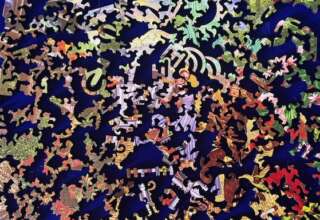
It is interesting to note that in recent years, those social scientists who study complex systems (such as those operating out of the Santa Fe Institute) note that traditional hierarchical rule is often incompatible with dynamic, complex systems (e.g. Kaufman, 1998). Beginning with Ilya Prigogine’s (Prigogine and Stengers, 1984) theory of dissipative structures and leading up to more recent descriptions of complex adaptive systems (Miller and Page, 2007), there is now ample evidence that most systems in nature are not hierarchical in nature.
Just as a flock of birds does not have a formal lead bird, so large, complex organizations (especially those that are international is scope and diverse in product or service offerings) are not amendable to traditional modes of authority and control. Rather, these organizations actually operate like the flock of birds in what is called a “self-organizing” manner. When flocking and self-organizing occurs, leadership is quite fluid and Ruby Red finds no home. Rather than labeling groups that are populated by people with a low need for control (often accompanied by suspicion regarding formal authority) as “laissez-faire”, we can now label them as dynamically self-organizing. Even with this new label, we are likely to find high levels of frustration among those with a strong Ruby Red perspective.
If we don’t fully buy the self-organization premise, then we can expand our identification of group leadership styles by offering a Goldilocks analysis. Organizations needs not be too hot (autocratic) or too cold (laissez-faire); rather, they can be a balance between high and low levels of control. While we might want to label this as “luck-warm leadership”, we can also identify it as a democratic form of leadership. Or we can use a less politically loaded term and call it collaborative or use a fancier term such as “synergetic”. Ruby Reds are still unlikely to fully buy into this Goldilockean “compromise.”






